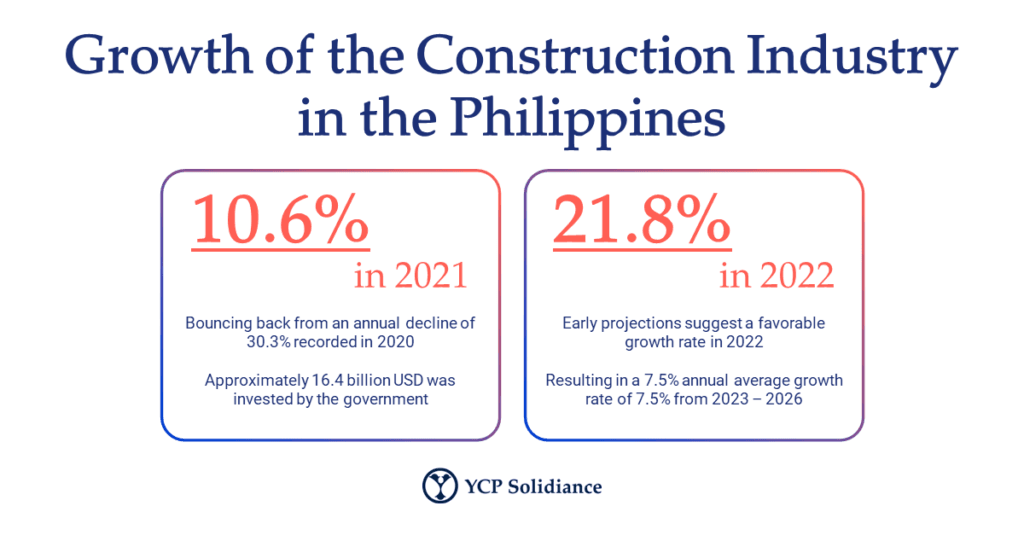The construction industry in the Philippines is experiencing a transformative shift driven by the adoption of advanced technologies. As the global market becomes increasingly competitive, the Philippines must accelerate its digital transformation to remain relevant. While the country ranked 61st out of 64 in the 2022 Global Finance Magazine’s ranking of technologically advanced nations, local construction firms have started making significant strides toward modernization. In this article, we’ll explore the Technology in Philippines Construction.
The Impact of BIM on Construction Projects

Building Information Modeling (BIM) is a game-changer for the construction industry, offering a digital representation of a building’s physical and functional aspects. By providing real-time collaboration between architects, engineers, contractors, and stakeholders, BIM minimizes costly errors, reduces waste, and ensures that projects are completed on time.
BIM’s adoption in the country is gradually increasing, with local firms incorporating it to optimize project planning and execution. This Technology in Philippines Construction allows stakeholders to visualize every stage of construction, providing a clear roadmap from conception to completion. This collaborative approach not only saves time but also fosters better decision-making, ensuring that all parties are aligned with the project’s goals.
AI and Robotics: Improving Efficiency and Reducing Costs
Artificial Intelligence (AI) and robotics are slowly making their mark as the Technology in Philippines Construction, with companies recognizing their potential to improve efficiency and reduce costs. AI’s ability to process vast amounts of data is beneficial for managing resources and predicting project outcomes. Meanwhile, robotics is being used for repetitive tasks such as bricklaying and excavation.
Robots are particularly useful in large-scale projects, where they can work continuously without breaks, speeding up construction timelines. In the Philippines, several projects have already adopted robotics, signaling a shift toward automation in the industry.
Drones: Enhancing Site Inspections and Monitoring
Drones are another Technology in Philippines Construction that is revolutionizing construction site management. Equipped with high-resolution cameras, drones can provide detailed aerial surveys and real-time monitoring of construction sites. This helps project managers keep track of progress and identify potential issues early on, ensuring that projects stay on schedule and within budget.
In the Philippines, drones are becoming more prevalent due to their cost-effectiveness and efficiency. They offer a safer alternative to traditional site inspections, reducing the need for workers to access hazardous areas. Drones also provide valuable data for topographical mapping, which can be used to enhance project planning.
Technology in Philippines Construction: A Glimpse Into the Future with 3D Printing
3D printing is poised to revolutionize construction materials and design. In the Philippines, interest in this technology is growing as a solution to address the housing shortage and create more affordable homes. By allowing for rapid prototyping of building components, 3D printing speeds up the construction process and reduces costs.
Challenges in Adopting Technology in Philippines Construction
Despite the benefits, there are significant challenges in adopting advanced Technology in Philippines Construction. One of the biggest barriers is the high cost of implementation. Small to medium-sized enterprises (SMEs), which make up a significant portion of the construction industry, often lack the financial resources to invest in these technologies.
Another challenge is the skill gap. Many labor workers in the Philippine construction industry are not yet equipped with the training needed to operate advanced tools. These tools include BIM software, drones, or robotics. Bridging this gap will require significant investment in education and training programs to ensure the workforce is ready for the future of construction.
A Bright Future for Technology in Philippines Construction
While there are hurdles to overcome, the future of construction in the Philippines looks promising. A 2022 survey by Procore Technologies Inc. found that 82% of Philippine construction firms had taken steps toward digital transformation. With 98% of respondents optimistic about the domestic construction market’s outlook, digital transformation will likely accelerate in the coming years.
The integration of Technology in Philippines Construction is set to transform the industry, making projects more efficient, cost-effective, and safer. While challenges remain, the adoption of BIM, AI, drones, robotics, and 3D printing signals a bright future for the industry.

